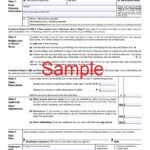When you receive a payroll check, your employer withholds some money from your salary as federal and state taxes and pays you the remaining salary. Anyone who gets a paycheck from the employer must understand the information available on the paystub regarding withholding taxes and deductions.
Calculating the tax percentage taken out of payroll is time-consuming and detailed as there are many federal and state taxes to be applied. Besides, not all the taxes are solely paid by the employee. Some taxes are also levied on the employer, and some are shared by both employee and employer.
Additionally, the amount or the percentage of taxes withheld from your salary isn’t the same for every employee. Several factors, such as your income, filing status, and the number of dependents, decide the final tax percentage. Therefore, determining the exact tally that applied to every taxpayer is impossible.
This article will tell you the average percentage of the possible taxes taken out from your salary to remit to the government.
What are Payroll Taxes?
Contents
The employee and employer are subjected to various taxes. The employer withholds these taxes from the employee’s paycheck and also adds the employer part of taxes from the company’s contributions to submit to the government. Such taxes are known as payroll taxes.
The typical payroll taxes include:
- Federal income taxes (paid by the employee)
- State and local income taxes
- Social Security Taxes
- Medicare taxes
- Federal Unemployment Tax Act or (FUTA)
- State Unemployment Tax Act (SUTA)
- State Disability Insurance
- Workers’ Compensation (state tax, paid by the employer)
Quantity of Tax Percentage taken out of a paycheck

Federal Income Tax
There isn’t any universal tax percentage that can be applied to everyone. Every employee fills out his W-4 Form as per his marital status, dependents and children, the gross salary, and other details. Therefore, the average tax percentage can’t be the same for every employee.
However, the federal government sets standard amounts or wage brackets that are used to calculate the income tax withholding amount.
Social Security Tax
The Social Security tax percentage is 12.4%, and each employer and employee pays 6.2%. This tax implies a wage base limit. The minimum income subjected to this tax for the year 2021 is $142,800.
Medicare Tax
The Medicare tax percentage is 2.9 %, and each employer and employee pays 1.45%. It has no wage base limit. A 0.9% is additionally withheld from the employee’s income who makes more than $200,000 per year.
State Income Tax
States can take one of the three approaches, which are
- No tax at all
- Flat tax rate (tax all income at the same rate)
- Progressive tax (tax higher income at the higher rate)
➡LEARN MORE: If I Owe State Taxes, Will They Take My Federal Refund?
FUTA (Federal Unemployment Tax Act)
It is 6% for the employer. It is applied only on the first $7,000 earnings of the employee.
SUTA (State Unemployment Tax Act)
If you file taxes on time, SUTA can be as low as 0.4%. However, each state decides its own tax range.
State Disability Insurance
It varies by state, and each state has its own tax rate.
Payroll taxes levied on Self-Employed Individuals
Self-employed individuals also have to pay their federal taxes, state taxes, and FICA. However, they don’t have to pay FUTA and SUTA.
The main difference is:
Self-employed individuals have to pay the full tax amount once a year when they file their personal income tax returns. They pay the full amount themselves because there are no employees and employers to share the tax.
Are there any deductible payroll taxes?
No taxes are deductible from the employee paycheck, but some payroll taxes are deductible to a business or company that pays the employees. The employer can claim tax deductions on Social Security, Medicare, and FUTA but not on federal income taxes.





